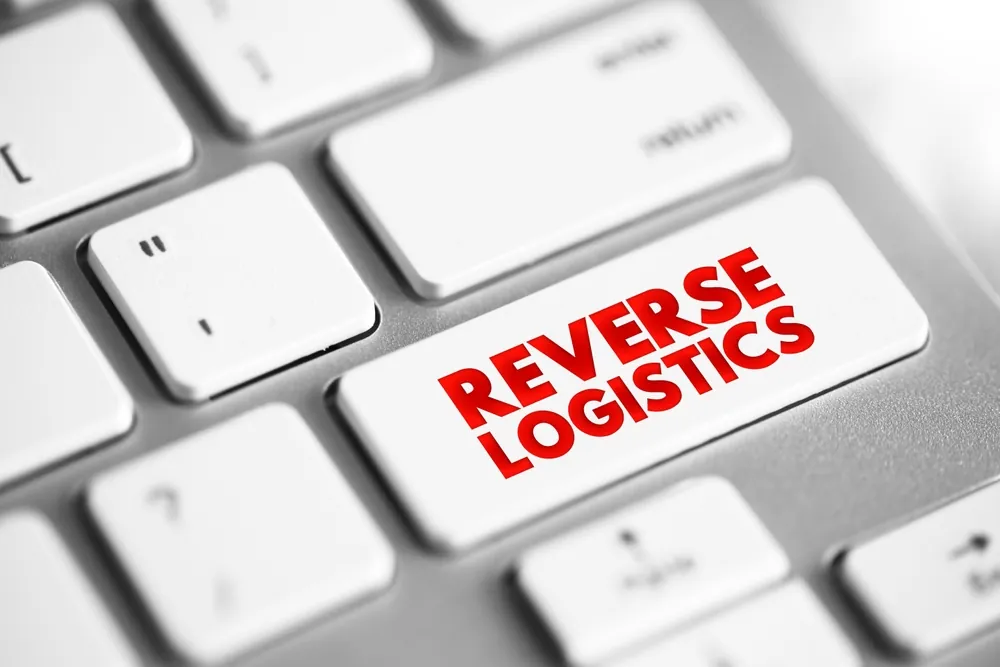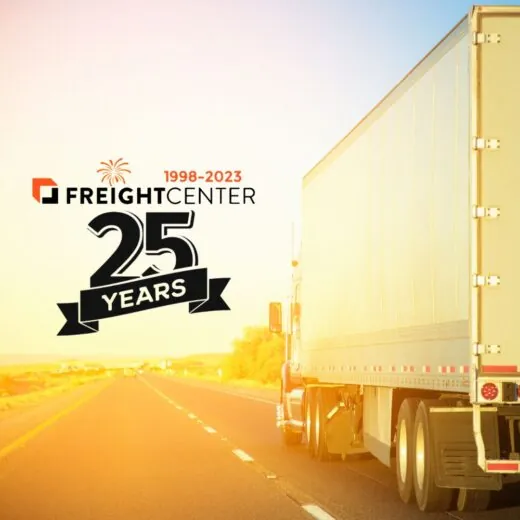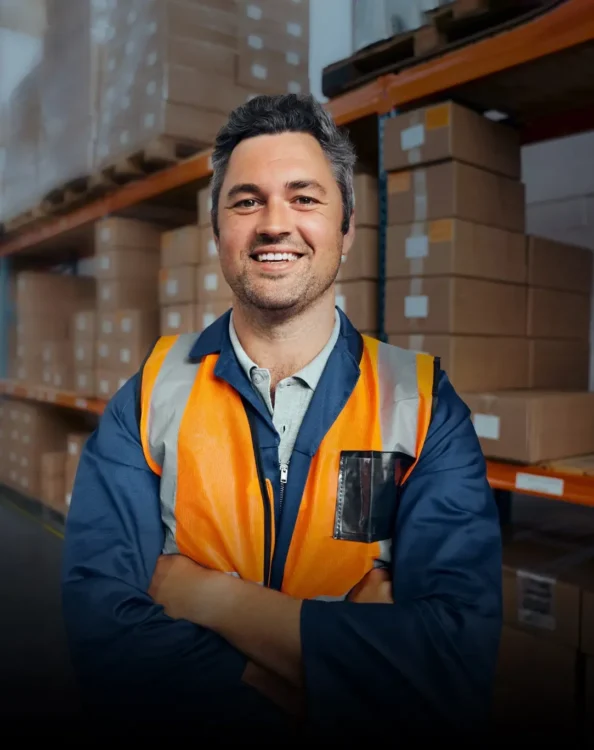
What Is Reverse Logistics?
Dive into Reverse Logistics, uncovering insights on returns management, refurbishment, and recycling. Discover how an efficient system can save costs, enhance customer satisfaction, and promote sustainability.
Reverse Logistics Defined
Reverse Logistics: Reverse Logistics is the process of returning products from end users through the supply chain to the retailer or manufacturer.
What is Reverse Logistics?
Reverse logistics is a process that starts with the consumer and moves in the opposite direction of a traditional product flow. This reverse process can return products to any destination along the supply chain. Reverse logistics include return management, refurbishment, disposal, and recycling. As a critical part of the supply chain, a smooth reverse logistics system is essential for damaged-product returns, recalls, restocking, salvage, seasonal, and excess inventory. An excellent reverse logistics system will optimize the flow of goods in both directions. An efficient system will lead to cost savings, increased customer satisfaction, and improved environmental sustainability. Robust reverse logistics is critical within industries like retail, electronics, and the automotive sector, where returns are commonplace and to be expected.
Supply chains that are well-designed can adapt to changes and reverse logistics requirements. Effective reverse logistics accounts for products being sent back, either one step in the supply chain or to the original supplier. Returned products can be returned to regular sales or discount stores like liquidators.
The Statistics
Reverse logistics can build customer loyalty, repeat business, and minimize return-related losses. As mentioned earlier, e-commerce purchases are much more likely to be returned than in-store purchases. 30% of e-commerce purchases are returned, compared to only 10% of in-store purchases. The volume of returns only goes up during the holidays, which is essential to remember when planning your reverse logistics protocols and procedures. Over the holiday season, 34% of Americans return gifts, according to Wallethub. Reverse logistics shipments will remain at high volume and increase once the holiday season is over, partially because consumers take about a month on average to return holiday purchases.
Despite the inevitable challenges of reverse logistics during the holiday season, the post-holiday returns window is a fantastic opportunity to gain loyal and repeat business. According to an Optoro study, after a positive returns experience, there is a 97% increase in the likelihood that a consumer will return and repeat business. This is a surefire incentive to enhance your reverse logistics processes before the holidays and gain a significant business boost! An additional purchase follows 62% of eCommerce returns, which is another reason to improve your returns processes.
The Goal
In reverse logistics, the goal is to regain product value or dispose of it most efficiently. As the world of e-commerce has grown, returns have become increasingly common, with returns reaching up to a trillion dollars annually. A key concept in regaining product value is providing customers with the proper channels to remedy a bad product experience. This means making the return process straightforward. This helps to salvage the lost financial value and the value of a lost customer.
Reverse Logistics processes are another way to create value and build customer trust. Returned products are resold, recycled, and reused by businesses, while effective reverse logistics strategies keep down costs associated with storage and distribution. According to research by Gartner, less than half of returned goods are resold at their total price, so finding the best return item disposition is valuable. Some retail businesses resell returned goods, meaning the company buys returns for a percentage of the original cost and resells them at a discounted price to the consumer.
While the thought of reverse logistics can sound like a headache, it is an opportunity to make your company even more successful than previously! When planning your reverse logistics process, remember the Five R’s!
The five Rs of reverse logistics are
- Returns
- Reselling
- Repairs
- Repackaging
- Recycling
Companies apply metrics to each “Rs” to help track success and improvements. Paying attention to the 5rs helps to streamline logistics processes and reduce total losses.
We provide competitive freight shipping prices and an all-inclusive, easy-to-use shipping experience for our customers. Exceeding our customers’ expectations results in thousands of satisfied customer reviews and repeat business. We believe in the power of our customer relationships. Check out FreightCenter reviews from real customers, and learn what they have to say about their freight shipping experience!
Awards and Endorsements
- 2021, 2017 & 2016 Food Logistics’ Top Green Providers
- 2021 & 2018 Supply & Demand Chain Executives’ Pros to Know: Matthew Brosious
- 2020 & 2019 Top Food Logistics’ 3PL & Cold Storage Provider Award
- 2020 & 2019 Business Observer’s Top 500 Companies on the Gulf Coast
- 2020 & 2017 SmartWay® Transport Partner
- 2020 & 2017 Food Logistics’ Champions: Rock Stars of the Supply Chain
- 2020 Best of Palm Harbor Awards for Local Businesses
- 2017 Green Supply Chain Award from Supply & Demand Chain Executive
- 2017 Tampa Bay Business Journal Heroes at Work
- 2016, 2015, & 2012 Food Logistics Top 100 Software and Technology Providers
- 2013 Tampa Bay Business 100 by Tampa Bay Business Journal
- 2013 Top 100 Great Supply Chain Partners by SupplyChainBrain
- 2012 TIA Samaritan Award Honorable Mention
- 2012, 2011 & 2010 TBBJ Fast 50 Recipient
- 2013, 2011, & 2010 Diversity Business Top Businesses

Why Choose FreightCenter for Reverse logistics services?
Why Choose Us For A Freight Quote?
- Shipping Quotes whenever, wherever!
- Obtain Freight Shipping Quotes from anywhere in the U.S. & Canada.
- “Double-take” discounts on your LTL freight, truckload, rail, air, and more
- Automated Freight tracking, paperwork & invoices
- Manage all quotes & shipments on one comprehensive platform.
- Twenty-five years of logistics experience on your side!
Choosing Your Carrier
There are no requirements for using the official carrier, and you can save a lot of money when you use a 3PL like FreightCenter to book your freight shipping. What’s more, when you call FreightCenter to take care of your shipping, you’ll receive excellent service for a fraction of the cost. And competition is the secret sauce; FreightCenter is where top carriers compete for your business. Need proof?
Use our user-friendly instant freight quote tool to obtain estimates from numerous carriers or to speak with one of our freight shipping experts by calling us at 800.716.7608.
Choosing FreightCenter
When you choose to work with us, you are choosing to make your shipping process seamless. Here are just some of the benefits working with our Third Party Logistics company will have on your shipping experience:
- When you partner with FreightCenter, a premier 3PL (Third Party Logistics) company with over twenty-four years of experience within the logistics industry, you are choosing peace of mind and bang for your buck! Over the past two and half decades, our team has dealt with nearly every shipment imaginable. There is no shipment process we cannot help you with!
- FreightCenter employs a knowledgeable staff that is always willing to learn and grow with industry changes and advancements. We are ready to answer any questions you have throughout the entire process!
- We act as the middleman between you and your carrier, so you do not have to worry about playing phone tag with your trucker. Your freight agent will communicate directly with you and your carrier, delivering any necessary information or updates between you.
- We secure the leading transit carriers and the finest routes for you at the best price. There is no need to spend hours figuring out the logistics or searching for a worthwhile deal.
- We make it easy to ensure your shipments by guiding you toward the best providers. Whether you need full or partial coverage, we have you covered!
- We arrange the pickups and drop-offs while also making sure to track each shipment in transit. This ensures that you know where your packages are every step of the way!
Now, what are you waiting for? Call FreightCenter to set up your account and discuss your shipment. We are ready to answer your questions and provide solutions! Our team looks forward to partnering with you.
Types of Reverse Logistics
Reverse logistics components focus on returns management, return policies and procedures (RPP), remanufacturing, packaging, unsold goods, and delivery services. Other components focus on leases, repairs, and product retirement.
Glossary
Reverse Logistics: Reverse logistics moves goods from their final destination (the consumer) back to the manufacturer or another point in the supply chain. Reverse logistics processes must be efficient, controlled, visible, and straightforward. Customers genuinely care about a company’s return flow and re-return policies.
Reverse Logistics Components: Reverse logistics components are the singular elements or parts of the overall reverse logistics process. It refers to the various stages and activities in managing returns and product movement within the supply chain. To address the reverse logistics processes, components refer to specific tasks and processes to handle the returned goods, such as returns, repairs, disposal, and recycling. Each component plays a significant role in minimizing the impact of returned products on the supply chain.
eCommerce: eCommerce stands for Electronic Commerce, which is the act of buying or selling goods and services over the Internet. eCommerce also includes electronic payments and digital marketing.
Supply chain: A supply chain is a network of the people, organizations, information, and resources that create and deliver a product or service. The supply chain process starts with manufacturing and ends with the consumer.
Returns Management: Returns management is handling returns within a supply chain. Activities include processing return requests, inspecting returns, determining whether to restock or refurbish, and managing returns logistics.
Re-returns: Re-returns refer to handling returns for a second time.
Return Policy and Procedure (RPP): RPP is the rules, processes, and conditions for handling customer returns. The returns process outline helps to ensure consistency and transparency in handling customer returns.
Remanufacturing or Refurbishment: Remanufacturing or Refurbishment is the process of restoring used and returned products to like-new or functional condition. The process can include various services such as disassembly, component replacement, repairs, and reassembly. Some goals of the process are to extend the product’s life, reduce waste, and reintroduce it to the market.
Packaging Management: Packaging management is the strategic use of planning, design, and packaging control for products throughout the supply chain. Factors such as sustainability, protective packaging, cost-effectiveness, and regulatory compliance are evaluated to enhance product protection and meet regulatory and logistics requirements.
Unsold Goods: Unsold goods are the products that have not been purchased and remain in inventory during a specific period. Proper management of unsold goods is crucial for inventory control. Businesses often opt for solutions such as discounts, promos, or returns to deal with excess inventory.
End-of-Life (EOL): Products have a life cycle, and (EOL) is the stage where manufacturers no longer produce, sell, or support them. Reasons for EOL can include advancements in technology, changes in customer demand, and newer models. EOL management involves decisions about discontinuation, potential recycling, inventory depletion, and disposal options.
Delivery Failure: Delivery failure occurs when shipments or deliveries do not reach their final destination successfully. Reasons for delivery failures can include address issues, logistics problems, damaged goods, or just unsuccessful delivery attempts. Solving the issue of delivery failures is critical for ensuring customer satisfaction and an efficient supply chain.
Rentals and Leasing: Rentals and leasing are standard vehicles, equipment, and real estate business models. This method involves customers paying for a product or service for a period. With a rental service, customers return the products after the specified period, while leasing refers to a longer-term agreement to purchase the product once the lease ends.
Repairs and Maintenance: Repairs and maintenance are the actions taken to restore a product to a functional or operational condition. This means fixing defects, replacing worn-out components, and routine upkeep to prevent breakdowns. These steps are essential to avoiding breakdowns, expanding lifespan, and reducing downtime.
Reverse Logistics Challenges
When implementing reverse logistics practices, it is essential to remember that the flow must be “bi-directional.” A bi-directional flow requires software that can automate and track every step of the process. A challenge to implementing this software is that management needs to monitor and evaluate the processes once implemented continuously. Management needs to monitor inbound and outbound logistics to understand the bigger picture fully. Inbound logistics is the management of raw materials and goods from supplier to manufacturer. Outbound logistics delivers finished goods to the end user. Management can monitor reverse logistics processes through tracking systems, barcoding, and data analytics, which can streamline operations and help management make informed decisions about returned or EOL products.
To create value for our customers by delivering customized shipping solutions that meet their unique needs and to fulfill shipping demands from simple to complex with expertise, guidance and ingenuity.
Rely on the professionals at FreightCenter for competitive rates and a wide range of choices to meet your LTL freight shipping requirements.
We provide tailored solutions for both full and partial truckloads, offering competitive pricing for dry van, flatbed, and refrigerated freight. Trust us to meet all your full truckload shipping requirements.
Our Nationwide Expedited Trucking services ensure the secure and swift movement of your freight. Whether it's a single large box or a full truckload, our freight shipping experts are equipped to deliver your shipment quickly.
Access the most dependable rates for Specialized Freight Services from leading carriers with just a few simple steps. Whether you need white glove service or international shipping, we have your needs covered.
Utilize flatbed trucks to accommodate and transport oversized or uniquely shaped shipments with ease and efficiency. These specialized vehicles offer the versatility needed to securely and safely transport cargo that exceeds standard dimensions or has unconventional shapes.
Optimize your shipping strategy by integrating various transportation modes, including trucking and rail, to enhance efficiency and achieve cost-effectiveness.
Utilize rail transport for extended distances or when handling multiple packages during the shipping process.
Transport goods in containers aboard cargo ships for international shipping.
Opt for air transportation when time-sensitive delivery shipments is required.
Arrange for trucking services to transport packages across international borders.
Engage specialized heavy haul trucking services for oversized or cumbersome shipments.
A third-party logistics provider is a company that offers enhanced and cost-efficient supply chain and logistics solutions to other businesses.

 Guaranteed competitive pricing every time you ship.
Guaranteed competitive pricing every time you ship.
